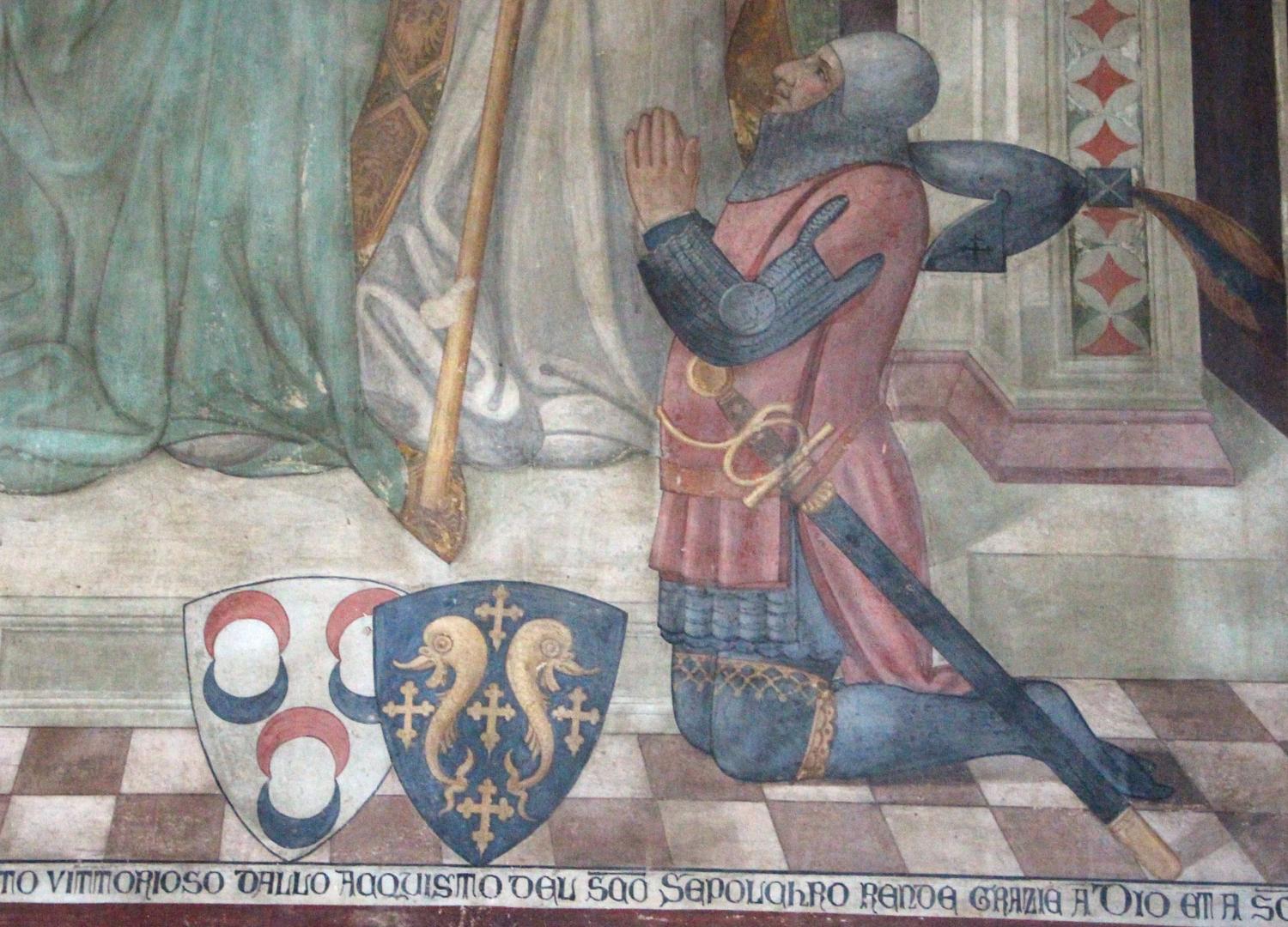The Holy Land in the eyes of Tuscan pilgrims
Legend has it that the “first Frank soldier hoisted” on the walls of Jerusalem in 1099, was Tuscan. This autumn, in Florence, a major exhibition will be inaugurated: “The Treasure of the Holy Land at the Marino Marini Museum. The beauty of the sacred: the Medici altar and the gifts of kings”. An opportunity for us to look back on the long history between the Holy Land and Tuscany. Here you have a short summary by François-Joseph Klos, a volunteer at the Terra Sancta Museum and a student in a Master’s degree in History.
From Roman times, the port of Pisa was of real importance in Mediterranean trade. And if Pisa experienced periods of tension with the Muslims in the Mediterranean, repelling raids by “Arab-Berber corsairs – whom the Tuscans called agareni or Saracens” in the tenth and eleventh centuries, it quickly helped to settle merchants and settlers in Jerusalem and in the ports on the Syrian-Palestinian shores[1].
Legend has it that the first “Frank” soldier to climb the walls of Jerusalem during the capture of the city by Godfrey of Bouillon in 1099 was a certain Pazzo de’ Pazzi, a Tuscan knight. He then brought back to his country three stones taken from the aedicule of the Holy Sepulcher. From this tradition was born the ceremony of the ” Scoppio del Carro “, inspired by the sacred fire celebrated every Holy Saturday at the Holy Sepulcher.

WITNESSES OF THE FRANCISCAN MISSION
In the fourteenth century, there are also many accounts of Tuscan pilgrimages. Niccolò da Poggibonsi, a famous Franciscan pilgrim to the Holy Land, travels through the years of the friars’ settlement on Mount Zion; he already describes the presence of the friars in the Basilica of the Holy Sepulcher. Illustrious Florentines, Frescobaldi, Sigoli and Gucci, give rise to stories indicating the presence of the friars at the Holy Sepulcher and the Nativity.



Frescobaldi and Sigoli are particularly interesting because they are the only pilgrims who equate the “Christians of the girdle” (in relation to the girdle worn by the dhimmis in the Land of Islam) with the Christians converted by the apostle St. Thomas (apostle of the Indies) who, according to tradition, received the girdle of the Virgin Mary (having been absent on the day of the Assumption and having had doubts, She gives it to him as a testimony that the event has indeed happened). This mention can be explained by the fact that the relic of this girdle is kept in the Duomo of Prato, a few kilometers from Florence[2], so Tuscan travelers full of their culture of origin make unprecedented connections.
We also have the account of Mariano di Nanni, a priest of Siena, who describes the involvement of the friars in welcoming pilgrims, especially those from the Italian peninsula. The trip of the Dominican Alessandro Rinuccini shows the involvement of the friars in accompanying pilgrims during religious services such as the Lenten vigils at the Holy Sepulcher.

REPRESENTING JERUSALEM IN FLORENCE
In some accounts, such as that of Zanobi di Antonio del Lavacchio, a connection is made between the Holy Land and the Florentine Franciscan places. The author thus attempts a comparison between Mount Zion and the Florentine church of San Salvatore al Monte. There is also an interesting coincidence: the steep path between the San Niccoló gate and the church is the place where the Franciscans established one of the first Stations of the Cross in Tuscany in the seventeenth century[3].

Friar Tommaso da Firenze, at the beginning of the sixteenth century, founded Nova Jerusalem, a series of chapels near the Franciscan convent of San Vivaldo near Montaione. In this place imbued with spirituality, between 1500 and 1515, Friar Tommaso da Firenze erected a group of chapels and small temples decorated with polychrome terracotta depicting scenes from the life and Passion of Christ. These buildings are arranged in such a way as to reproduce, on a reduced scale, the plan of Jerusalem at the time. Thanks to a papal bull from Leo X that granted indulgences to visitors to San Vivaldo, this sanctuary nestled in nature became an alternative place of pilgrimage for those unable to travel to the Holy Land,[4]especially during the Ottoman period.

The links between the Holy Land and Tuscany are expressed through the accounts of Tuscan travels and by a desire to link Franciscan sites and holy places in Jerusalem. These links were brought to a climax in the relations between the most powerful Florentine family, the Medici, and the Holy Sepulcher. To be discovered in the next article! Stay tuned!
[1] Franco Cardini: “Tra memoria, reinvenzione e alibi. La crociata a Firenze nel XV secolo” in Nejedlý, Martin. Histories and Memoirs From the Crusades to the End of the Middle Ages. Presses Universitaires du Midi, 2015.
[2] Rouxpetel, Camille. The West in the Mirror of the Christian East: Cilicia, Syria, Palestine and Egypt, (XIIth. -XIVth. century). École française de Rome, Rome 2015.
[3] Franco CARDINI: “La Toscana e la Custodia di Terra Santa” in Piccirillo, Michele (ed.), La Custodia di Terra Santa e l’Europa: I rapporti politici e l’attività culturale dei Francescani in Medio Oriente. Il Veltro, 1983.



